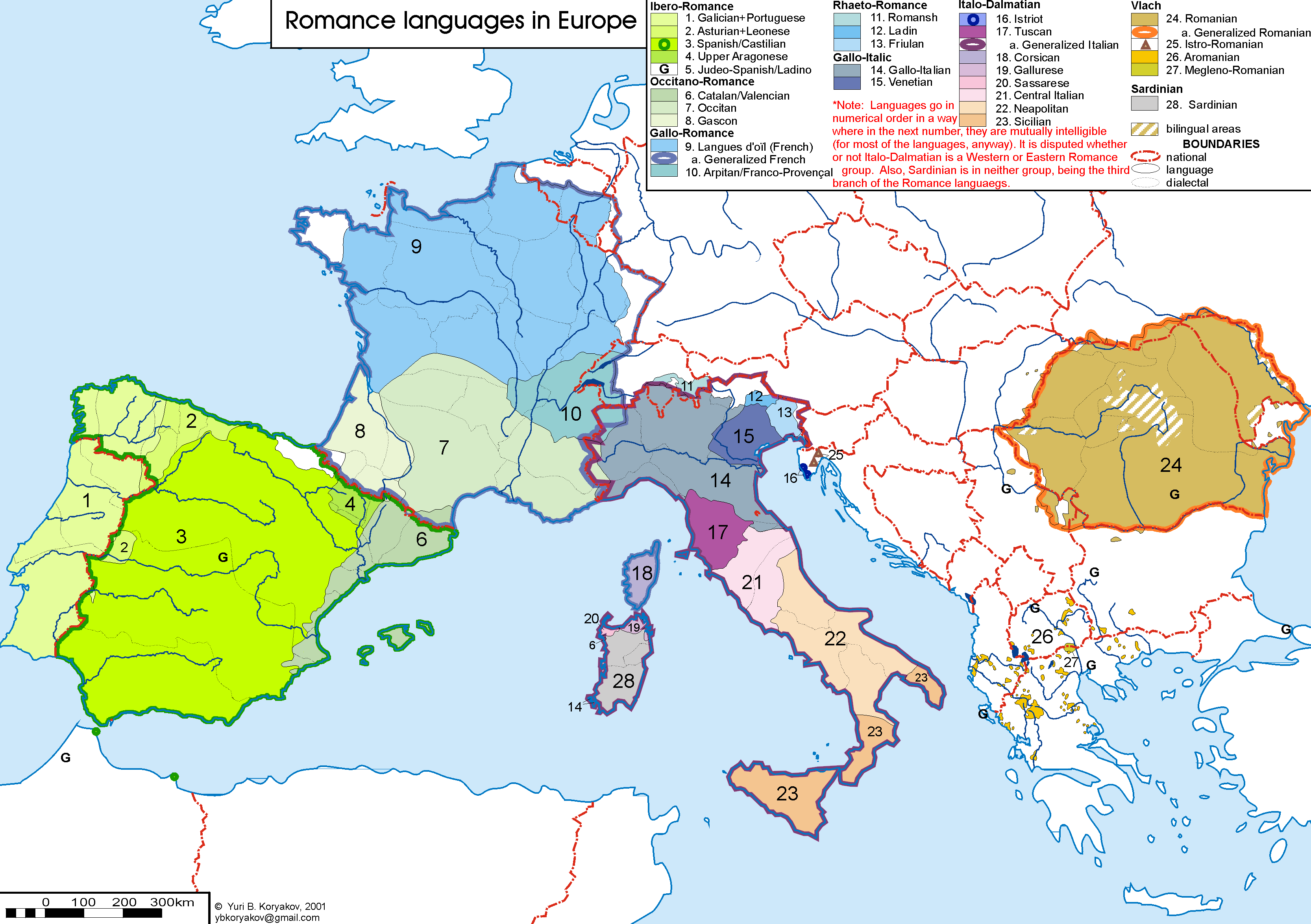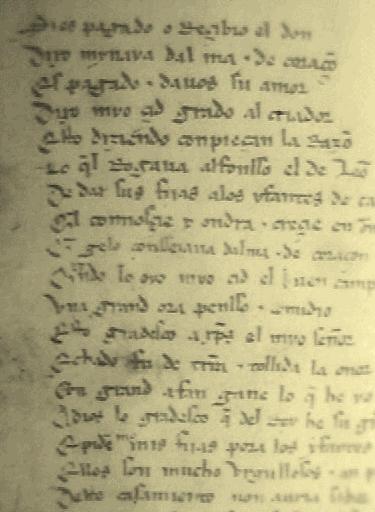|
Pan-Romance Language
A pan-Romance language or Romance interlanguage is a codified linguistic variety which synthesizes the variation of the Romance languages and is representative of these as a whole. It can be seen as a standard language proposal for the whole language family but is generally considered a zonal constructed language because it's the result of intense codification (that is, more construction, planning, design, engineering, manipulation than what regular standard languages usually require). Zonal languages are, according to interlinguist Detlev Blanke, constructed languages which "arise by choosing or mixing linguistic elements in a language group" (meaning elements from one same language family, for example Slavic or Germanic). Several pan-Romance languages have been developed by different individuals or groups in different times (since the 19th century) and places (Brazil, Canada, Denmark, Italy, Norway, Portugal, Spain, Switzerland, etc.). They are so similar to each other ... [...More Info...] [...Related Items...] OR: [Wikipedia] [Google] [Baidu] |
Romance Languages
The Romance languages, also known as the Latin or Neo-Latin languages, are the languages that are Language family, directly descended from Vulgar Latin. They are the only extant subgroup of the Italic languages, Italic branch of the Indo-European languages, Indo-European language family. The five list of languages by number of native speakers, most widely spoken Romance languages by number of native speakers are: * Spanish language, Spanish (489 million): official language in Spain, Mexico, Equatorial Guinea, the Sahrawi Arab Democratic Republic, SADR, Cuba, Dominican Republic, Puerto Rico and most of Central America, Central and South America * French language, French (310 million): official in 26 countries * Portuguese language, Portuguese (240 million): official in Portugal, Brazil, Portuguese-speaking African countries, Portuguese-speaking Africa, Timor-Leste and Macau * Italian language, Italian (67 million): official in Italy, Vatican City, San Marino, Switzerland; mi ... [...More Info...] [...Related Items...] OR: [Wikipedia] [Google] [Baidu] |
Cognate
In historical linguistics, cognates or lexical cognates are sets of words that have been inherited in direct descent from an etymological ancestor in a common parent language. Because language change can have radical effects on both the sound and the meaning of a word, cognates may not be obvious, and it often takes rigorous study of historical sources and the application of the comparative method to establish whether lexemes are cognate. Cognates are distinguished from loanwords, where a word has been borrowed from another language. Name The English term ''cognate'' derives from Latin , meaning "blood relative". Examples An example of cognates from the same Indo-European root are: ''night'' ( English), ''Nacht'' ( German), ''nacht'' ( Dutch, Frisian), ''nag'' (Afrikaans), ''Naach'' ( Colognian), ''natt'' ( Swedish, Norwegian), ''nat'' ( Danish), ''nátt'' ( Faroese), ''nótt'' ( Icelandic), ''noc'' ( Czech, Slovak, Polish), ночь, ''noch'' ( Russian), но� ... [...More Info...] [...Related Items...] OR: [Wikipedia] [Google] [Baidu] |
ISO 639 Macrolanguage
A macrolanguage is a group of mutually intelligible speech varieties, or dialect continuum, that have no traditional name in common, and which may be considered distinct languages by their speakers. Macrolanguages are used as a book-keeping mechanism for the ISO 639 international standard of language codes. Macrolanguages are established to assist mapping between different sets of ISO language codes. Specifically, there may be a many-to-one correspondence between ISO 639-3, intended to identify all the thousands of languages of the world, and either of two other sets, ISO 639-1, established to identify languages in computer systems, and ISO 639-2, which encodes a few hundred languages for library cataloguing and bibliographic purposes. When such many-to-one ISO 639-2 codes are included in an ISO 639-3 context, they are called "macrolanguages" to distinguish them from the corresponding individual languages of ISO 639-3. According to the ISO, ISO 639-3 is curated by SIL Intern ... [...More Info...] [...Related Items...] OR: [Wikipedia] [Google] [Baidu] |
Language
Language is a structured system of communication that consists of grammar and vocabulary. It is the primary means by which humans convey meaning, both in spoken and signed language, signed forms, and may also be conveyed through writing system, writing. Human language is characterized by its cultural and historical diversity, with significant variations observed between cultures and across time. Human languages possess the properties of Productivity (linguistics), productivity and Displacement (linguistics), displacement, which enable the creation of an infinite number of sentences, and the ability to refer to objects, events, and ideas that are not immediately present in the discourse. The use of human language relies on social convention and is acquired through learning. Estimates of the number of human languages in the world vary between and . Precise estimates depend on an arbitrary distinction (dichotomy) established between languages and dialects. Natural languages are ... [...More Info...] [...Related Items...] OR: [Wikipedia] [Google] [Baidu] |
Vulgar Latin
Vulgar Latin, also known as Colloquial, Popular, Spoken or Vernacular Latin, is the range of non-formal Register (sociolinguistics), registers of Latin spoken from the Crisis of the Roman Republic, Late Roman Republic onward. ''Vulgar Latin'' as a term is both controversial and imprecise. Spoken Latin existed for a long time and in many places. Scholars have differed in opinion as to the extent of the differences, and whether Vulgar Latin was in some sense a different language. This was developed as a theory in the nineteenth century by François Just Marie Raynouard, Raynouard. At its extreme, the theory suggested that the written register formed an elite language distinct from common speech, but this is now rejected. The current consensus is that the written and spoken languages formed a continuity much as they do in modern languages, with speech tending to evolve faster than the written language, and the written, formalised language exerting pressure back on speech. ''Vulgar ... [...More Info...] [...Related Items...] OR: [Wikipedia] [Google] [Baidu] |
Italian Advert In Barcelona
Italian(s) may refer to: * Anything of, from, or related to the people of Italy over the centuries ** Italians, a Romance ethnic group related to or simply a citizen of the Italian Republic or Italian Kingdom ** Italian language, a Romance language *** Regional Italian, regional variants of the Italian language ** Languages of Italy, languages and dialects spoken in Italy ** Italian culture, cultural features of Italy ** Italian cuisine, traditional foods ** Folklore of Italy, the folklore and urban legends of Italy ** Mythology of Italy, traditional religion and beliefs Other uses * Italian dressing, a vinaigrette-type salad dressing or marination * Italian or Italian-A, alternative names for the Ping-Pong virus, an extinct computer virus * ''Italien'' (magazine), pro-Fascist magazine in Germany between 1927 and 1944 See also * * * Italia (other) * Italic (other) * Italo (other) * The Italian (other) * Italian people (other) Italian ... [...More Info...] [...Related Items...] OR: [Wikipedia] [Google] [Baidu] |
Sardinian Language
Sardinian or Sard ( , , , , or , ) is a Romance languages, Romance language spoken by the Sardinians on the Western Mediterranean island of Sardinia. The original character of the Sardinian language among the Romance idioms has long been known among linguists."Da G. I. Ascoli in poi, tutti i linguisti sono concordi nell'assegnare al sardo un posto particolare fra gl'idiomi neolatini per i varî caratteri che lo distinguono non-solo dai dialetti italiani, ma anche dalle altre lingue della famiglia romanza, e che appaiono tanto nella fonetica, quanto nella morfologia e nel lessico." ("From G. I. Ascoli onwards, all linguists agree in giving Sardinian a special place among the neo-Latin languages because of the various characteristics that distinguish it not only from the Italian dialects, but also from the other languages of the Romance family, and that appear as much in its phonetics as in its morphology and lexicon.") Almagia, Roberto; Cortesi, Fabrizio; Salfi, Mario; Sera, Gio ... [...More Info...] [...Related Items...] OR: [Wikipedia] [Google] [Baidu] |
Occitan Language
Occitan (; ), also known by its native speakers as (; ), sometimes also referred to as Provençal, is a Romance language spoken in Southern France, Monaco, Italy's Occitan Valleys, as well as Spain's Val d'Aran in Catalonia; collectively, these regions are sometimes referred to as Occitania. It is also spoken in Calabria ( Southern Italy) in a linguistic enclave of Cosenza area (mostly Guardia Piemontese) named Gardiol, which is also considered a separate Occitanic language. Some include Catalan as a dialect of Occitan, as the linguistic distance between this language and some Occitan dialects (such as the Gascon language) is similar to the distance between different Occitan dialects. Catalan was considered a dialect of Occitan until the end of the 19th century and still today remains its closest relative. Occitan is an official language of Catalonia, Spain, where a subdialect of Gascon known as Aranese is spoken (in the Val d'Aran). Since September 2010, the Par ... [...More Info...] [...Related Items...] OR: [Wikipedia] [Google] [Baidu] |
Artistic Language
An artistic language, or artlang, is a constructed language designed for aesthetic and phonetic pleasure. Constructed languages can be artistic to the extent that artists use it as a source of creativity in art, poetry, calligraphy or as a metaphor to address themes such as cultural diversity and the vulnerability of the individual in a globalizing world. They can also be used to test linguistical theories, such as Linguistic relativity. Unlike engineered languages or auxiliary languages, artistic languages often have irregular grammar systems, much like natural languages. Many are designed within the context of fictional worlds, such as J. R. R. Tolkien's Middle-earth. Others can represent fictional languages in a world not patently different from the real world, or have no particular fictional background attached. Genres Several different genres of constructed languages are classified as 'artistic'. An artistic language may fall into any one of the following groups, dependi ... [...More Info...] [...Related Items...] OR: [Wikipedia] [Google] [Baidu] |
Latin
Latin ( or ) is a classical language belonging to the Italic languages, Italic branch of the Indo-European languages. Latin was originally spoken by the Latins (Italic tribe), Latins in Latium (now known as Lazio), the lower Tiber area around Rome, Italy. Through the expansion of the Roman Republic, it became the dominant language in the Italian Peninsula and subsequently throughout the Roman Empire. It has greatly influenced many languages, Latin influence in English, including English, having contributed List of Latin words with English derivatives, many words to the English lexicon, particularly after the Christianity in Anglo-Saxon England, Christianization of the Anglo-Saxons and the Norman Conquest. Latin Root (linguistics), roots appear frequently in the technical vocabulary used by fields such as theology, List of Latin and Greek words commonly used in systematic names, the sciences, List of medical roots, suffixes and prefixes, medicine, and List of Latin legal terms ... [...More Info...] [...Related Items...] OR: [Wikipedia] [Google] [Baidu] |
Internationalism (linguistics)
In linguistics, an internationalism or international word is a loanword that occurs in several languages (that is, translingually) with the same or at least similar meaning and etymology. These words exist in "several different languages as a result of simultaneous or successive borrowings from the ultimate source". Pronunciation and orthography are similar so that the word is understandable between the different languages. It is debated how many languages are required for a word to be considered an internationalism. Furthermore, the languages required can also depend on the specific target language at stake. For example, according to Ghil'ad Zuckermann, the most important languages that should include the same lexical item in order for it to qualify as an internationalism in Hebrew are Yiddish, Polish, Russian, French, German and English. The term is uncommon in English, although English has contributed a considerable number of words to world languages, e.g., the sport t ... [...More Info...] [...Related Items...] OR: [Wikipedia] [Google] [Baidu] |





